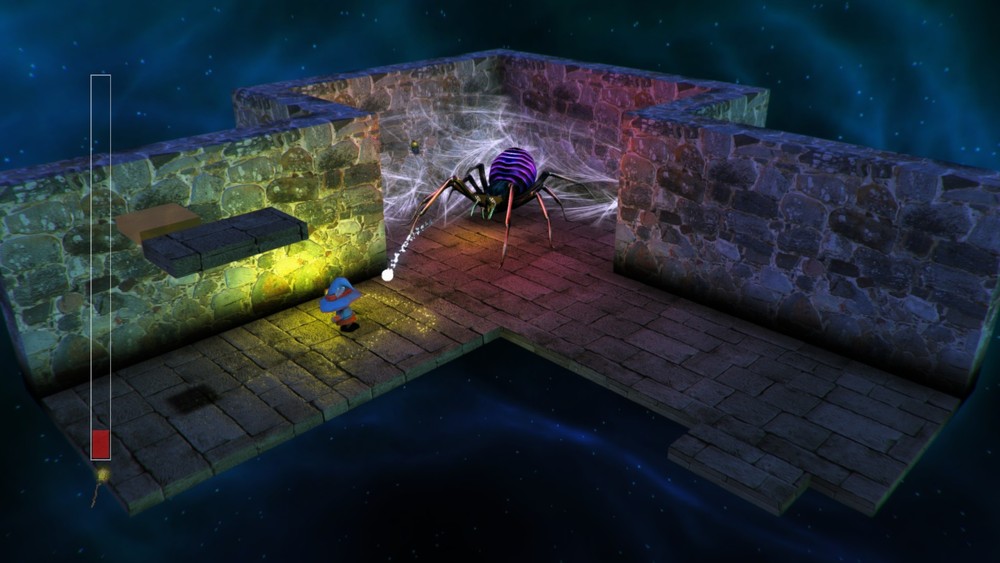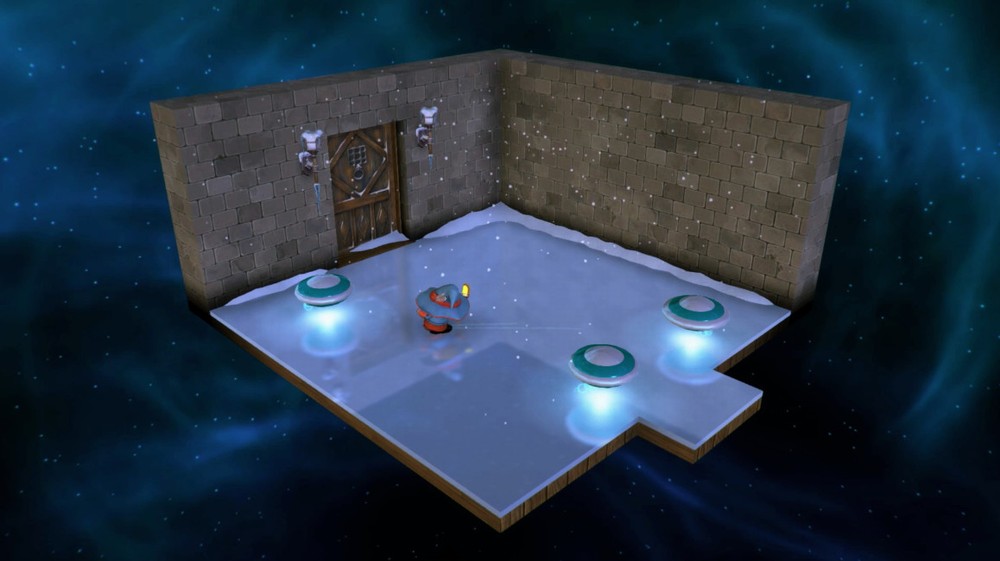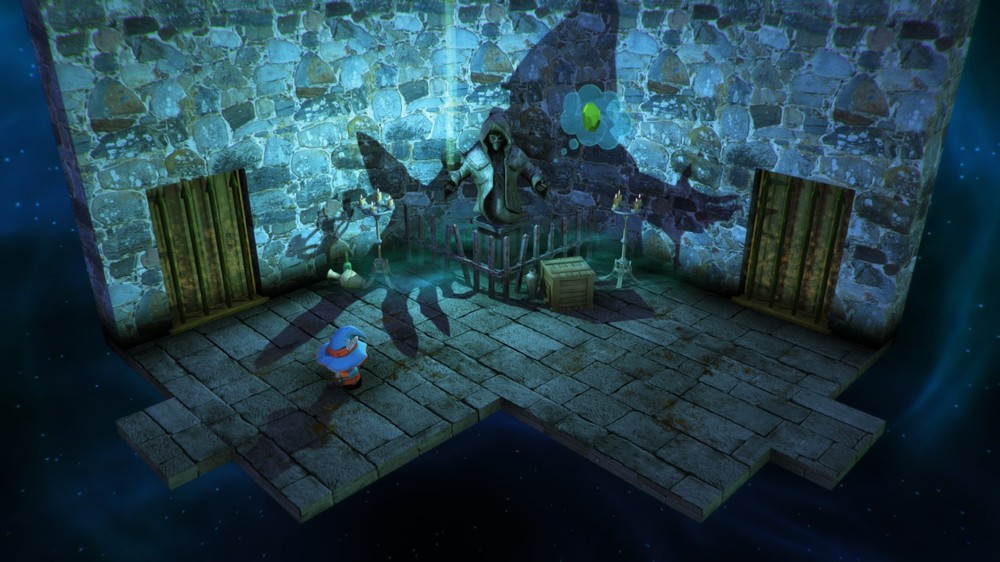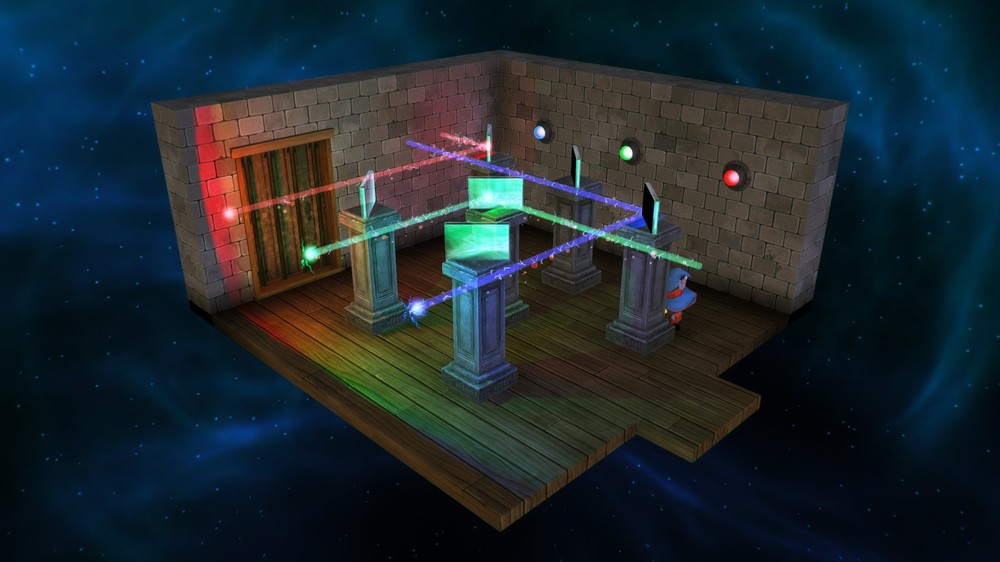In Lumo, a teenager manages to find their way into a game development studio, and in the course of their explorations, transports themselves into a video game world with more than a hint of 1980’s adventure games about it. Though you’re never explicitly told where you are or what you’re supposed to do next, your wanderings through this mysterious world have you encountering giant spiders, fixing broken conveyor belts, and avoiding perilous traps, all while trying to discover how to get back to the real world.
Lumo seems to straddle the line between harking back to the early days of video gaming and providing an attractive experience to gamers of a more recent generation. While this can be seen from the combination of attractive, hi-definition visuals shown from an isometric viewpoint, it is explicit outlined in the two game modes that are available to be chosen from the main menu. Titled ‘Adventure’ or ‘Old School’, your choice will drastically alter your experience of Lumo. Adventure more provides you with infinite lives, a map, and the ability to save your game at any point, while Old School gives you finite lives and no map, and you’re working against the clock.
If you die in Lumo, you return to the start of whichever room you happen to be in at the time. In the early stages of the game, this isn’t too much of a punishment, as each room is a fairly straightforward puzzle to overcome. As you progress, however, you’ll find rooms become a lot more difficult to traverse, with moving platforms, spikes, fire traps and steam-spewing pipes being just a few examples of the obstacles in your way. Unfortunately, as the difficulty increases within the game, Lumo becomes more frustrating than challenging, mainly because of the loose controls and the fact that the isometric viewpoint makes it difficult to see where your jump is going to land.
This is a shame, because my first couple of hours with Lumo was a joy. I greatly enjoyed the serene pace, wandering around and wondering what I’d discover in the next room. Sometimes this would be an upgrade for my character, such as being able to jump higher or a light to illuminate hidden platforms, and other times it would be a room containing an 80’s style robot, or an homage to Donkey Kong or Back to the Future. There are also a number of puzzles which aren’t particularly difficult to solve, but present some amusingly abstract outcomes, such as dropping a giant bar of soap into dirty water in order to use the bubbles it produces to cross a large gap.
Though these entertaining moments continue for the duration of the game, the latter stages contain too many intervals of patience-testing frustration, even on Adventure mode, where you’re not especially punished for dying. There are certain rooms that can take upwards of ten minutes to get through, just because of the fact that you can’t quite see where you’re supposed to land a jump, or whether you’re achieving enough height to clear a particular obstacle. There were a number of times where I had to put the controller down and walk away for a few minutes, for fear of unintentionally breaking something, and I’m not usually one to get mad while gaming.
Though a phrase usually reserved for sports, Lumo is definitely a game of two halves. You have the charming and engrossing wandering of the first half, followed by an exceptionally frustrating second half, where the difficulty is ramped up significantly. There’s never any real sense of success, or of overcoming a difficult section through wits or gaming skill, instead, there is merely the sense of relief that you likely won’t have to deal with a particularly finicky section again. The first half is almost enough to recommend Lumo on its own, but the later sections of the game leave a bad taste in the mouth, and unfortunately those are often the impressions that linger longest.



















